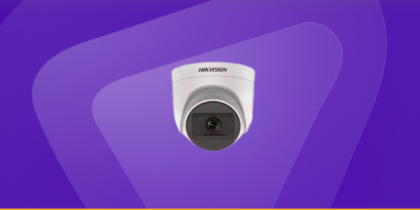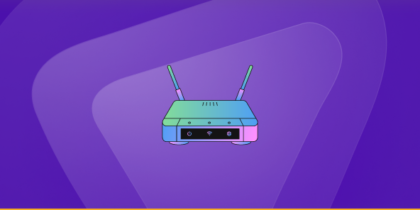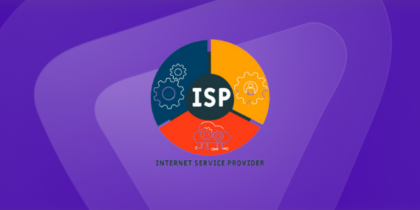Table of Contents
There are many ways to keep data safe on the cloud. One way is to use a VPN service like PureVPN which encrypts all of the traffic going to and from your device, making it impossible for anyone to spy on your activities.

Personal Cloud:
Personal cloud storage (PCS) is local network-attached storage (NAS) device that lets users store data, photos, music, videos, and other files and is optimized for media streaming.
What is Cloud Data Security?
Cloud data security protects data stored in the cloud from unauthorized access, misuse, disclosure, disruption, modification, or destruction.
It is a crucial part of cloud computing, as it ensures that information is secure and protected, even if it is saved remotely from the organization’s physical control.
Benefits of Cloud Data Security
Cloud security is an essential factor of cloud computing that offers many benefits to companies.
Let’s explore a few benefits of cloud data security:
Better Infrastructure Visibility
Strong cloud security allows organizations to hold visibility into the internal workings of their cloud, along with what information they have and where they are placed, who is using their cloud services, and the kind of information they’re accessing.
Easy backups and recovery
Cloud data security solutions make it smooth to back up and recover records in case of a security breach or other incident.
24×7 Monitoring
The cloud protection solutions enable 24×7 monitoring of the utility and cloud-based assets, presenting continuous visibility into an organization’s risk posture and its impact on the enterprise.
Higher availability
Cloud safety solutions offer protection against DDoS attacks, which might increase in numbers, importance, sophistication, and severity.
It facilitates constantly monitoring, becoming aware of, analyzing, and mitigating DDoS attacks.
Regulatory compliance
Cloud information safety can assist organizations in meeting regulatory needs and ensuring compliance with data protection legal guidelines like GDPR.
Cost Efficiency
Cloud safety removes the need for on-web page hardware and preserves cost, offering a cost-effective solution for defending your information.
Encryption
Data inside the cloud is encrypted at rest and in transit, including an extra layer of protection for your sensitive records.
Automated Updates
Cloud vendors regularly update security features to deal with emerging threats, ensuring your data is protected against modern vulnerabilities.
Available Solutions for Cloud Data Security
There are many cloud data security solutions available that may assist groups in protecting their statistics and virtual information assets from threats, unauthorized entry, robbery, and corruption:
Cloud information encryption
This includes encrypting information saved or transmitted in and out of the cloud to guard it from safety threats, unauthorized entry, robbery, and corruption.
Access management and controls
This solution enforces policies and measures that save you from unwanted access and ensure that data can be accessed or modified using authorized users or techniques.
Cloud security software
This solution includes using software tools to protect your data using cloud services and cloud-based applications.
Threat control
This benefits dealing with threats and event data with unique insights to evolve to new threats and quickly detect and respond to these attacks.
Data governance
This solution involves enforcing rules and measures that ensure data is trustworthy, correct, accurate, and reliable.
In addition to these standard solutions, some cloud-based safety solutions are available.
For instance, Amazon Web Services (AWS) gives several protection offerings, together with AWS Key Management Service (KMS) and AWS Identity and Access Management (IAM).
Microsoft Azure additionally provides some safety services, which include Azure Key Vault and Azure Active Directory.
What Are the Challenges in Cloud Data Security?
Cloud data security has a few challenges that organizations need to deal with:
Data Breaches
Cloud breaches are a massive challenge, with cybercriminals continuously evolving their techniques to infiltrate cloud environments and steal critical data.
Identity and Access Management
Ensuring that most authorized customers have the right to enter cloud assets is complex, and mismanagement can result in information publicity.
Data Loss
Data loss can arise from unintentional deletion, misconfiguration, or a cloud provider outage. Ensuring backup and recovery is crucial.
Shared Responsibility
The shared responsibility version is that even as cloud providers secure the infrastructure, clients are responsible for ensuring their data and configurations, leading to potential gaps in security.
Vendor Lock-In
Switching cloud companies can be complicated and highly priced, doubtlessly locking groups into a selected dealer’s safety solutions.
Insider Threats
While outside threats are complex, insider threats from personnel or contractors’ access to cloud records pose dangers.
What Are the Risks and Best Practices in Cloud Data Security?
Let’s discover risks in Cloud security with measures to avoid them:
Data Breaches and Unauthorized Access
Risk
Data breaches can cause unauthorized entry to sensitive information.
Best Practice
Implement strong access controls, sturdy authentication, and encryption to shield information. Regularly audit and monitor logs for suspicious activity.
Data Loss and Backup
Risk
Data loss can arise because of accidental deletion or misconfiguration, emphasizing the need for data backup and recovery.
Best Practice
Regularly backup your information and broaden a complete restoration plan to save you from data loss incidents.
Vendor Selection and SLAs
Risk
Choosing an unreliable cloud provider can divulge your records to security dangers.
Best Practice
Select professional carriers with sturdy security features and proper SLAs that outline records safety obligations.
Incident Response
Risk
Lacking an incident reaction plan can cause inadequate mitigation of safety breaches.
Best Practice
Develop a complete incident response plan to successfully discover, reply to, and mitigate security incidents.
Regular Auditing and Monitoring
Risk
Insufficient monitoring can risk immediate response in the detection of safety incidents.
Best Practice
Continuously monitor cloud environments, conduct regular protection audits, and respond immediately to anomalies.
Patch Management
Risk
Neglecting security patches exposes cloud services and packages to known vulnerabilities.
Best Practice
Keep cloud resources updated with the protection patches to defend against potential exploits.
Do I need a VPN for personal cloud?
The VPN creates a seamless pipeline that keeps any data from being leaked when connecting to Cloud storage. Cloud storage requires the same level of security as keeping your data secure using VPN. Make sure you remember that components can go independently of one another. Nevertheless, collaborating is necessary regardless of their relationship.
Is a personal VPN necessary?
When using public Wi-Fi at locations like coffee shops, libraries, hotels, or other public spaces (e.g., from a cafe), a virtual private network (VPN) is an essential privacy tool. Therefore, you may not need to install a VPN in order to keep your online activity safe.
Do you need a VPN to access cloud?
Rather than VPNs, remote employees access cloud resources themselves because public cloud resources cannot be accessed on the employees’ computers. authentication and authorization are handled by public cloud service providers that offer third-party services.
How do I setup PureVPN on the cloud?
- Go to the VPN page in the Cloud Console….
- Click on Create VPN connection when creating your gateway for the first time.
- wizard will guide you through the VPN setup process.
- To select the Classic VPN option, click the button.
- Continue after clicking Continue.
- You will be prompted to select the following gateway settings: Once the VPN connection page has been created, click Create VPN connection.
Configuring Port Forwarding for Personal Cloud:
To access the personal cloud, you would need the allow port 443. If you have more than one Personal Cloud, you can enter the range of port values for your Personal Clouds. The range of port values is 50500-50599.
Many ISPs (Internet Service Providers) block incoming traffic on certain ports. Cloud uses port 443 by default. PureVPN port forwarding ADD ON will help you to open the required port on your router and all you need are the followings:
Access the member area.
- Go to the Port forwarding tab
- Select “Enable Specific Ports” and insert ports: 433 and 50500-50599
- Apply Settings
- Connect VPN to your Router
How to open ports behind CGNAT
What if your ISP performs CGNAT? Most ISPs perform CGNAT (Carrier-grade Network Address Translation) to conserve bandwidth and assign a single IP address to multiple users connected to the same internet network. However, CGNAT makes it difficult for you to open ports on the router.
To get around the CGNAT issue, you can use the Port Forwarding add-on to bypass this problem and port forward routers without hassle.
Here’s more information on how to use PureVPN’s Port Forwarding add-on and bypass CGNAT in a few clicks.
Things you need from PureVPN
- PureVPN Subscription which you can purchase from the link below: https://www.purevpn.com/sec-order
- Port forwarding ADD ON
Quickly and safely open ports using PureVPN
Opening a port shouldn’t be complicated. With the Port Forwarding add-on, it’s as simple as 1, 2, and 3!
Why choose PureVPN?
- Ultra-Private & Secure: PureVPN uses 256-bit secure encryption on all connections. It lets you access the internet with a cloak of privacy and security.
- P2P Allowed: Our secure VPN service empowers users to anonymously upload and download data from across the internet.
- Fastest VPN Speed: Dips in speed can turn online entertainment into frustrating bummers. With PureVPN, you can cross all speed limits with total ease and comfort.
- 24/7 Customer Support: At PureVPN, our support teams are proactive and real people (we’re pretty nice, too!). We work tirelessly at all hours to satisfy your inquiries or concerns.
Conclusion:
As we have seen, there are various ways which can store data securely in the cloud. However, the most important thing is ensuring that the data is encrypted before being uploaded onto the cloud. This can be done using PureVPN, which offers military-grade encryption that will make sure that your data is safe from any potential threats
FAQ’s
Data protection in the cloud refers to the practices and technologies used to protect virtual information saved, processed, or transmitted in cloud environments.
It encompasses various measures, like encryption, access controls, authentication, and auditing, to ensure records’ confidentiality, integrity, and availability.
Data protection in cloud computing relies on five essential components. Encryption guards data both in transit and at rest.
Access management restricts who can alter data through mechanisms like RBAC and IAM.
Real-time auditing and monitoring systems and activities, enabling rapid response to security threats.
Lastly, adherence to enterprise compliance standards ensures records privacy, sovereignty, and security, which is essential, mainly in regulated sectors like healthcare and finance.
The key difference between information and cloud safety is that cloud protection explicitly addresses the risks associated with cloud computing.
Cloud computing environments are complicated and allotted, which could make them stable.
Meanwhile, information security deals with the overall safety of data assets on other software or hardware.
Protecting information in the cloud is a shared duty of the cloud issuer and the purchaser.
The cloud issuer is answerable for the safety of the underlying infrastructure, including the servers, storage, and networks.
For example, in a SaaS (Software as a Service) version, the cloud issuer is liable for the security of the software and the information.
The consumer is responsible for the safety of the data itself. This includes encrypting data at rest and in transit and implementing access controls to restrict who can access information.



